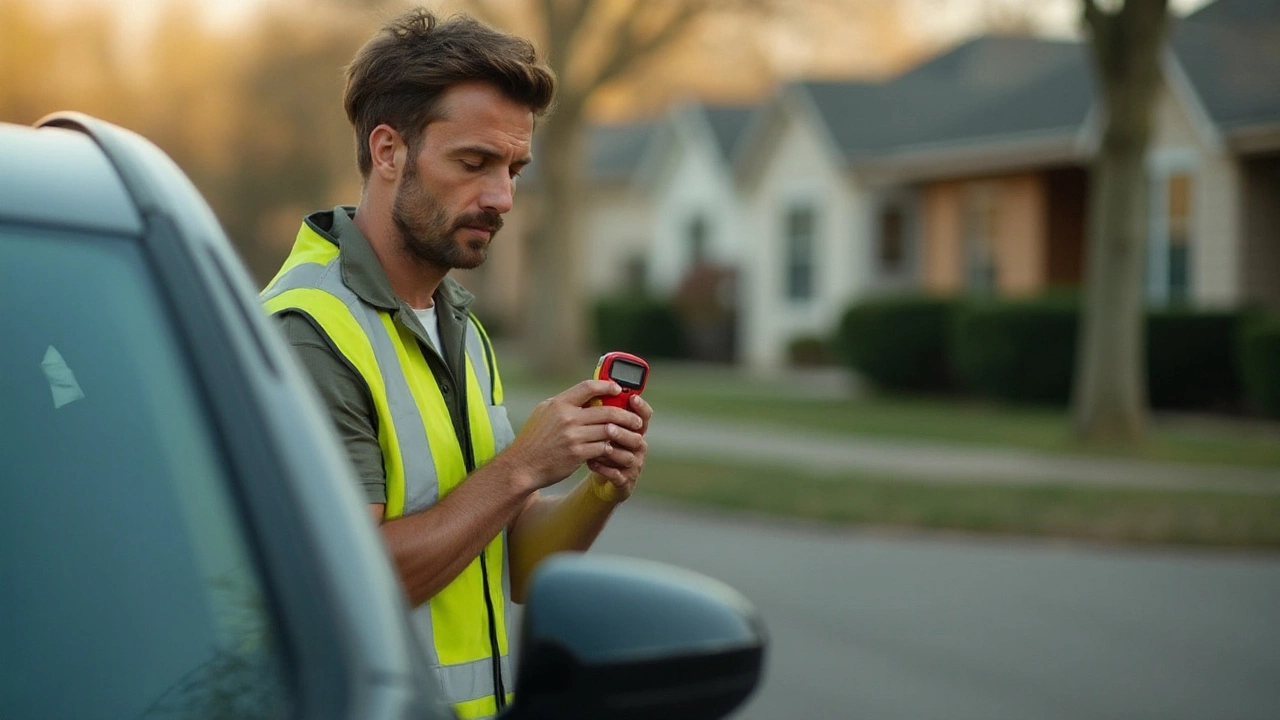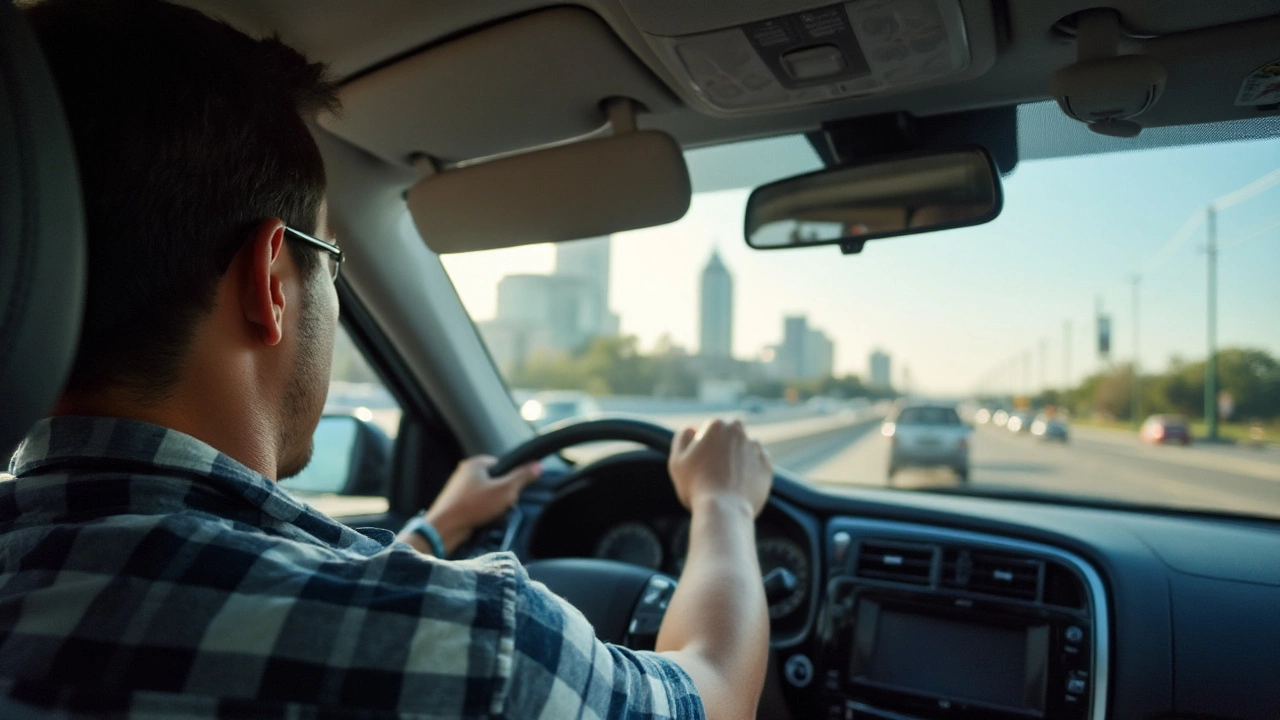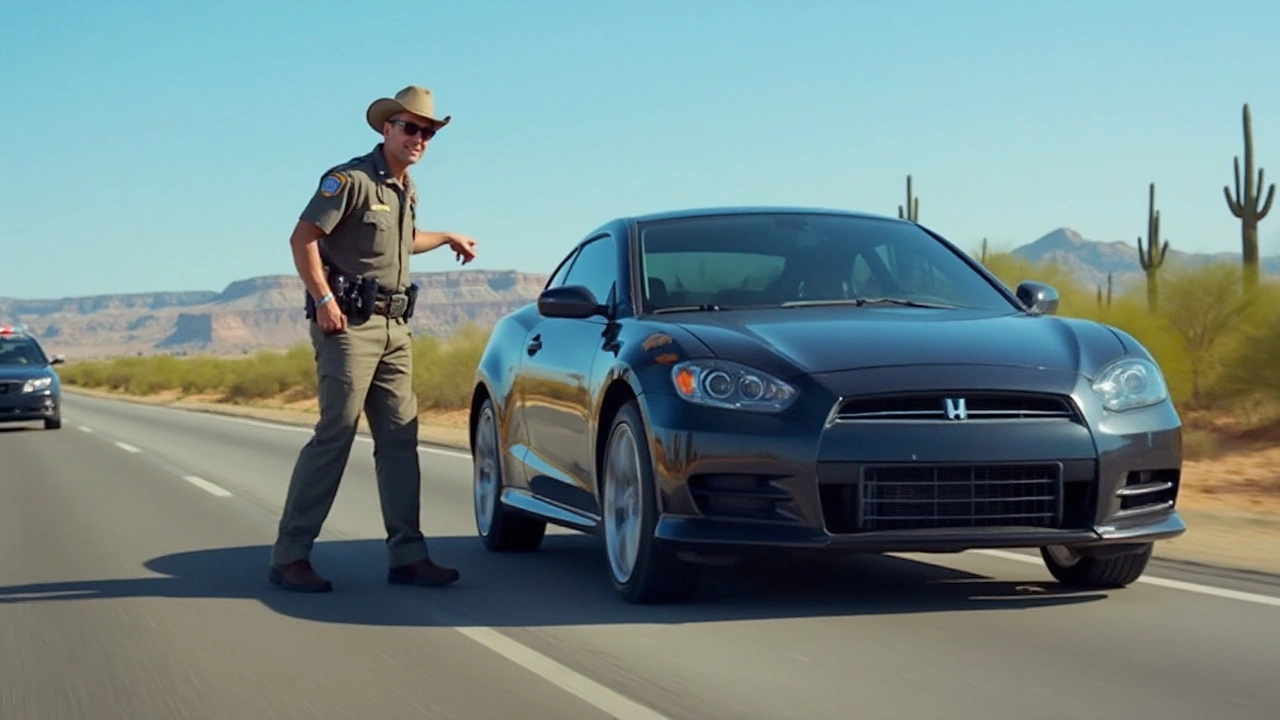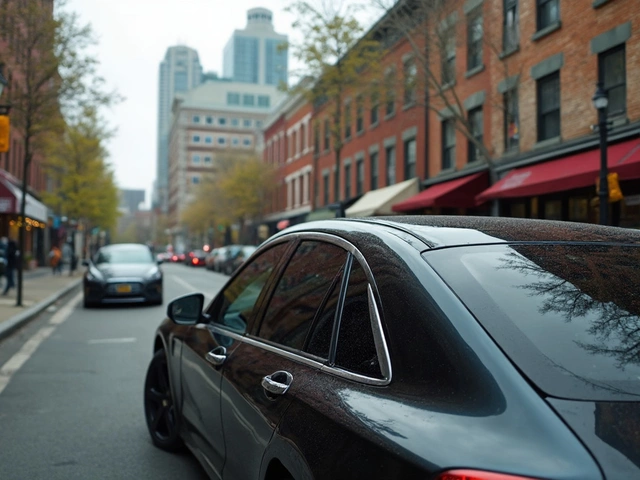If you're cruising around Texas with tinted windows, you might have wondered about the possibility of being pulled over by law enforcement. Whether you're trying to protect your car's interior from the blazing heat or seeking a bit of privacy, tinting can be a solid choice—but it's crucial to know where legal boundaries lie.
In the Lone Star State, regulations on window tinting are distinct and enforceable, with specific guidelines dictating permissible darkness levels and reflective qualities. Officers often keep an eye out for vehicles that appear to infringe upon these rules, making it a common cause for traffic stops.
Keep reading to discover what Texas law requires regarding window tint, why these rules exist, and how to ensure your vehicle stays within legal limits. Stay informed so you're not caught off-guard while out on the road.
- Texas Window Tinting Laws
- Reasons Police Might Stop You
- Legal Consequences of Tint Violations
- Tips for Compliance
Texas Window Tinting Laws
When considering window tinting for your car in Texas, it's essential to be acquainted with the specific requirements laid down by the state. The law in Texas outlines the permissible levels of window tint for different types of vehicles, primarily focusing on the degree of light transmission, known as Visible Light Transmission (VLT) percentage. For instance, the law mandates that the front windshield can only have a tint strip along the top, extending no more than five inches and it should not be darker than 'AS-1' line, generally allowing more than 25% of light to pass through. This light transmission level is crucial for maintaining visibility for drivers, which is why the law doesn't allow darker front tints.
As we delve into the specifics, the front side windows must let in more than 25% of light, meaning that these windows cannot be overly dark. Similarly, the rear window and the back side windows have slightly more relaxed rules, allowing a darker tint, provided it still adheres to the 25% VLT guidelines. Moreover, Texas tint law forbids highly reflective or mirrored appearance windows to prevent any glare issues that could endanger other road users. Understanding these specific tint law nuances is important since they help ensure safety and legality while enhancing the car's aesthetic appeal.
"The objective is to strike a balance between providing comfort and protection to vehicle occupants while ensuring that the driver's view is unobstructed and clear," says a spokesperson from the Texas Department of Public Safety.
The regulations apply not only to individuals driving personal vehicles but also to commercial vehicles, as adherence ensures uniformity in traffic standards, making for a safer driving environment. It's also worth noting that medical exemptions exist within Texas laws. These are for individuals who require additional sun protection due to medical conditions, allowing them legally to have their vehicles equipped with darker tints. Such conditions must be verified by a licensed physician and documented appropriately.
Enforcement of these tint laws can lead to steep fines and penalties if disregarded. Police officers are equipped with devices to measure the VLT percentage instantly during a routine traffic stop. If a vehicle fails to comply with the set standards, owners might be required not only to face financial consequences but also to have the tint modified to meet the legal requirements. Keeping abreast with these state guidelines is beneficial as it avoids the inconvenience of non-compliance and ensures peace of mind while enjoying the comfort tint offers.
For those considering modifications, consulting with a professional window tinting service that is well-versed in state regulations can be invaluable. They can guide you in selecting the right tint level that both suits your preferences and aligns with legal standards. Also, keeping abreast of any updates to these regulations is crucial as legislative changes can alter the permissible standards from time to time.

Reasons Police Might Stop You
Driving with a tinted car in Texas can sometimes feel like being in the wild west of window tint laws. You never know when the police might take a sudden interest in your window tinting. Many drivers underestimate how keen law enforcement officers are on spotting violations related to car modifications. After all, your car's appearance says a lot, and any hint of excessively dark windows might invite further scrutiny. The reasons are often rooted in safety and adherence to the state regulations that govern how dark and reflective vehicle windows are allowed to be.
Imagine cruising on a sun-soaked Texas highway. Suddenly, you notice the flash of red and blue lights in your rearview mirror. It's a scene no driver enjoys, but one many face due to uncertainty about tint laws. Officer discretion plays a significant role in deciding whom to stop. If an officer perceives your tint as overly dark or suspiciously shiny, it's often enough reason for them to hit the siren and pull you over. Many stops related to tint are due to the perception that tinting might impair the driver's or law enforcement's ability to see clearly through the windows.
But what triggers such perceptions in the first place? Well, beyond the apparent shade, many cops are trained to spot certain signs which suggest non-compliance. For instance, if your vehicle's windows reflect sunlight like mirrors – a quality often seen in illegal tint jobs – they might see that as a red flag. There are also sophisticated tools integrated into police work, like tint meters, which allow the officers to measure the opacity level on the spot, turning speculation into precise data. A reading that falls beyond legal limits can result in a citation or warning.
Interestingly, sometimes it's not just about the tint shade. Plates hint at some other infringement or outright ignorance of the law might amplify the officer's decision to stop your vehicle. For example, if a car's license has expired, and the windows are heavily tinted, it gives officers more to question you about. Sure, talking your way out while the officer sits judge and jury on the roadside is always an option, but when it comes to something as straightforward as window tinting, knowledge and compliance ahead of time remains the best insurance against unsolicited roadside interaction with the law. As stated in an interview by Texas Highway Patrol Officer John Duggan,
"Tint regulations are essential for ensuring driver visibility and safety, and we're here to make sure everyone respects that."
There's an intricate dance of factors, some known, others spontaneous, that determine whether a tinted vehicle will be stopped by the police. Local news stories often report about the rising number of tickets issued due to inappropriate tint levels, reminding everyone that keeping abreast of regulations is crucial. It cannot go unmentioned that beyond just adhering to the law, ensuring your tint is compliant can significantly reduce the frequency of unwarranted stops. You get to reach your destination sooner, with no paperwork or fines awaiting you upon arrival.

Legal Consequences of Tint Violations
For those tint enthusiasts out there, it's important to be well-versed in the potential repercussions of not adhering to Texas window tinting laws. If you find yourself stopped by police for having unreadable license plates or something else, window tint might also nab their attention. Running afoul of these regulations can lead to fines, and in some cases, repeated offenses could elevate the situation to include misdemeanor charges. Texas takes its tint laws seriously, primarily because overly dark or reflective tints can hinder a driver’s ability to see clearly and can pose a risk both to them and other road users.
When you're pulled over, officers may use a special gadget called a tint meter. This device measures the percentage of visible light transmission (VLT) that passes through your car windows. The legal VLT for the front windshield strips is often more stringent compared to other windows. If the results show your car's window tinting doesn't meet the required standards, they might issue you a ticket for a non-moving violation. This typically means the fines are less than those for speed fines or other common traffic offenses. However, these fines can still bite, often ranging from $20 to $275 per violation.
There's a good chance that getting slapped with a tint ticket might not seem all that intimidating at first. But here’s the catch—a temporary fix might not always satisfy the law. You could be obligated to remove or replace the tint, which means you might end up spending more on legal and repair costs in the long run. As per Alex Taylor, a traffic law attorney, "Persistent non-compliance with tint laws might escalate if left unaddressed. Although it begins with modest fines, it could lead to complications with renewing vehicle registration or even facing misdemeanor charges."
Interestingly, exemptions exist for specific individuals. For example, if you have legitimate documentation concerning medical conditions like lupus or xeroderma pigmentosum, you might qualify for lighter restrictions. Still, the path through these exemptions can be quite complex, requiring multiple logins to various forms and data submission. Missing one step in the process could leave your application pending indefinitely.
Understanding the penalties and regulations around Texas tint violations isn't merely a good-to-know; it’s essential car-owner knowledge that can help you avoid unnecessary stress down the road. After all, when it comes to cruising the freeways of one of America’s most diverse states, legal compliance means more than just checking off boxes—it gives you peace of mind.

Tips for Compliance
Embracing car window tinting adds significant comfort and style to your vehicle, but ensuring you remain within the bounds of Texas' regulations is essential. The first step towards compliance is understanding the permitted darkness levels for each window of your car. According to Texas law, the front windshield may have a tint at the top five inches, also known as the "eyebrow," with a minimum of 25% visible light transmission (VLT) for the side windows that come with the driver and the passenger's seat. The back windows and rear windshield are allowed to have any degree of darkness. This might sound complicated, but visualizing these percentages in practical terms could mean using a tint meter or consulting with a professional installer who understands state requirements inside out.
Regular checks might save you from unpleasant fines or having to re-tint your windows. The police use a tint meter device to measure darkness and ensure vehicular compliance, so investing in a similar tool can put you ahead of any potential stops. Routine inspections before hitting the road give you peace of mind knowing your tint is within the legal framework. A quick consultation with a professional about recommended service and maintenance of your tint can also play a huge role. Not only does professionally-installed film often adhere better over the long haul, it also might come with warranties that protect you from the costs of any do-overs.
Beyond the numbers, it’s crucial to keep proper receipts and documentation if you have special medical exemptions that require a darker tint. Though rare, these exemptions must be documented adequately to present to law enforcement if needed. Tips are not just about restrictions; they are about tailoring the car ownership bliss to easily fit into legal molds. Try seeing these reductions in heat and glare as not just aesthetic decisions, but as health improvements as well if carefully managed.
The Texas Department of Public Safety notes, "It is the responsibility of the vehicle owner to maintain compliance with these regulations."This statement compels us to see the issue beyond personal flair—rights and laws go hand in hand.
For those new to the Texas tint laws, connecting with local automotive enthusiast groups or forums might be worthwhile. They often share personal experiences and updated information which can be a real game changer. Exploring government sites for pamphlets or detailed guides further clarifies any doubts one may still have about the process. Combine credible online resources and social community exchanges for a more fulfilling car ownership experience in compliance with the law. But one must remember that regulations change, and although you might know them today, revisiting them ensures you're compliant tomorrow.
Finally, appealing to the foundation of Texas' tint laws immerses you in understanding why they exist. Having a balance of safety for law enforcement, efficient driving with reduced distractions, and cutting down on too much sun intake is a thoughtful compliance hack as well. Beyond taking the law at face value, try practicing empathy for those who instilled it and why. From protecting against criminals hiding in shadows to ensuring clear lines of sight during difficult nighttime driving, pick apart the law so it’s comprehensible on your own terms.




